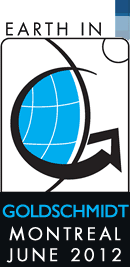Features
Dates & Deadlines
April 20
Early-bird registration deadline
June 1
Hotel reservations
June 11
Online Registration closes
The call for abstracts is now closed.
Themes
Sessions & Descriptions
| < Previous Theme | Theme Overview | Next Theme > |
Theme 11
Atmospheric Aerosols: Sources, Transformation, and Deposition
Joel Savarino, CNRS-Grenoble,
Becky Alexander, UofWashington,
SESSIONS
11a. Biogeochemical cycling of aerosols and their effects in the evolving Earth’s climate
(co-hosted by Themes 11 and 10)
Co-conveners:
Nicholas Meskhidze (North Carolina State University) - nmeskhi![]() ncsu.edu
ncsu.edu
Ina Tegen (Institute for Tropospheric Research, Leipzig, Germany) - itegen![]() tropos.de
tropos.de
Climate projections remain an important scientific goal for the earth science community. A large fraction of the uncertainty in predicting climate change lies in the uncertainties associated with feedbacks in the carbon cycle and aerosol forcing. These feedbacks are the result of land-atmosphere-ocean natural and anthropogenic interactions. Understanding those interactions is of great importance for characterizing possible future changes in the evolving Earth. While aerosols are a source of micronutrients (iron, phosphorus, nitrogen) for the ecosystems, the emission and transformation processes of many aerosols (e.g. desert dust or secondary organic aerosols of biogenic sources) can themselves be influenced by biogeochemical processes. We invite submissions on lab/field measurements, remote sensing, and modeling that lead to process-level understanding of biogeochemical land-atmosphere-ocean interactions. Interdisciplinary research on deposition of dust and volcanic particles, heterogeneous chemical/photochemical transformation of aerosols, and in-situ studies for the effects of aerosols on ocean/terrestrial biogeochemistry are welcome. The earth system models with aerosol deposition coupled to the land-ocean biogeochemistry are in their infancy. Until such models can reliably reproduce the effect of aerosol deposition on carbon cycle, it will be problematic to estimate how changes in aerosol deposition over time might have affected the evolving climate of the Earth.
11b. Arctic black carbon: emissions, transport, and multiscale modeling
Co-conveners:
Meng-Dawn Cheng (Oak Ridge National Laboratory) - chengmd![]() ornl.gov
ornl.gov
WeiMin Hao (United States Forest Service) - whao![]() fs.fed.us
fs.fed.us
SESSION MERGED with 11f
11c. Dust variability during the Holocene: a multidisciplinary perspective
Co-conveners:
François De Vleeschouwer, EcoLab (UMR-CNRS, Toulouse) - fdevleeschouwer![]() gmail.com
gmail.com
Malin Kylander (Stockholm University) - malin.kylander![]() geo.su.se
geo.su.se
Gaël Le Roux (EcoLab, UMR-CNRS 5245, Toulouse) - gael.leroux![]() ensat.fr
ensat.fr
SESSION MERGED with 12a
11d. Aerosol from megacities: air quality, climate and health implications.
Co-conveners:
Gregory R. Carmichael (University of Iowa) - gcarmich![]() engineering.uiowa.edu
engineering.uiowa.edu
Alexander Baklanov (Danish Meteorological Institute) - alb![]() dmi.dk
dmi.dk
SESSION MERGED with 11a
11e. Chemical origin and evolution of organic aerosols in Titan's atmosphere
Co-conveners:
Patrice Coll (LISA, France) - pcoll![]() lisa.u-pec.fr
lisa.u-pec.fr
Melissa Trainer (GSFC, Maryland) - melissa.trainer![]() nasa.gov
nasa.gov
François Raulin (LISA, France) - raulin![]() lisa.u-pec.fr
lisa.u-pec.fr
Titan is one of the best targets for the study of organic chemistry at a full planetary scale. Atmospheric aerosols play a key role in the radiative transfer of the atmosphere, but in addition they may also act as a net sink for C and N atoms. Key questions are still open regarding their chemical origin, molecular composition, interpretation of in-situ observations and formation pathways and how they act as an ultimate source of particle deposition onto the surface. The composition of the organic haze should thus show some connections with material composing dunes and other surface objects, and controls the interaction and chemistry that can occur at the surface-atmosphere interface.
Titan's aerosol chemistry will be covered in this session within four main aspects :
- direct observations and in situ sampling of Titan's chemical aerosols
- laboratory simulation and analysis of solid products (tholins) formed in Titan atmospheric simulators
- modeling results of Titan's atmospheric and surface processes
- comparison between data from (1), (2) and (3)
11f. Transport and transformation of natural (volcanic) and anthropogenic (black carbon) aerosols
Co-conveners:
Jihong Cole-Dai (South Dakota State) - Jihong.Cole-Dai![]() sdstate.edu
sdstate.edu
Clive Oppenheimer (Cambridge, U.K.) - co200![]() cam.ac.uk
cam.ac.uk
Meng-Dawn Cheng (Oak Ridge National Laboratory) - chengmd![]() ornl.gov
ornl.gov
WeiMin Hao (United States Forest Service) - whao![]() fs.fed.us
fs.fed.us
Black carbon and volcanic particles are two atmospheric aerosols that play critical role in climate change, and are less understood. For example, black carbon is a result of incomplete combustion and responsible for 50% (almost 1 degree C) of the increased warming in the Arctic from 1890 to 2007. Accumulation of black carbon on ice surfaces could lead to a continuing decline in summer sea ice, warmer temperatures, changes in vegetation, permafrost degradation, and other ecological and environmental changes with potential worldwide implications. Volcanic activities are a major natural source of aerosols, particularly during and immediately following major explosive eruptions. The chemical and physical evolution of volcanic aerosols, through interaction with other atmospheric components, influences the properties and functions of the atmosphere in profound ways. Much of the atmospheric transport process, surface snow interaction, and other physical-chemical behavior of black carbon and volcanic particles in the low-temperature environment remain unclear. This session will provide a forum for researchers to present their latest research results related to emissions, transport, transformation, deposition, and concentration of these two critical aerosols and its relationship to other pollutants.
Keynote speaker:
Sarah Doherty (University of Washington), sarahd![]() atmos.washington.edu
atmos.washington.edu
Co-hosted sessions:
Please note that for abstract submission purposes, the following sessions and their respective descriptions appear in their primary Theme assignments (numbers in red or before the title).
- 7d.- Records of climate change from terrestrial archives: palaeosols and loess.
- Co-convenors: Mohammed Rafi G. Sayyed/India and Martine Gerard/Paris
(co-hosted by Themes 7, 10 and 11). - 20b.- Geochemistry and human health effects of atmospheric particulate matter
- Co-convenors: Allan Kolker/USGS and Geoff Plumlee/USGS
(co-hosted by Themes 20, 11 and 14)




